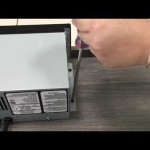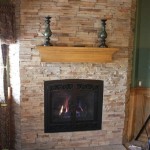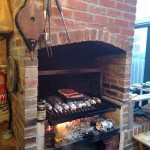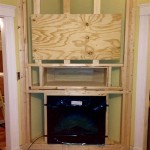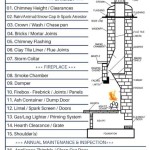Gas Fireplace Outdoor Vent Covers: A Comprehensive Guide
Gas fireplaces offer the convenience and ambiance of a traditional fireplace without the hassle of wood-burning. However, similar to any appliance that combusts fuel, gas fireplaces require proper ventilation to ensure safe and efficient operation. The outdoor vent, a crucial component of this system, is often overlooked, but it plays a vital role in expelling exhaust gases and preventing dangerous conditions within the home. A vent cover, in turn, protects this vent from the elements and potential obstructions.
This article provides a comprehensive overview of gas fireplace outdoor vent covers, including their purpose, types, selection criteria, installation, and maintenance. The information presented aims to equip homeowners and professionals with the knowledge necessary to make informed decisions regarding these essential components.
The Primary Functions of Gas Fireplace Vent Covers
Gas fireplace vent covers serve multiple critical functions, all contributing to the safety, efficiency, and longevity of the fireplace system. Understanding these functions is paramount to appreciating the importance of a properly installed and maintained vent cover.
First and foremost, vent covers act as a barrier against the elements. Rain, snow, and ice can enter the vent opening, potentially damaging the fireplace components, corroding metal parts, and impacting the fireplace’s ability to function correctly. Water ingress can also lead to rust and deterioration of the venting system itself, necessitating costly repairs or replacements. Vent covers, typically constructed of durable, weather-resistant materials, effectively shield the vent opening from these elements, preventing water damage and prolonging the lifespan of the system.
Secondly, vent covers prevent the entry of debris and pests. Leaves, twigs, dirt, and other materials can accumulate within the vent, obstructing airflow and hindering the efficient expulsion of exhaust gases. This obstruction can lead to a buildup of carbon monoxide, a colorless and odorless gas that is potentially lethal. Similarly, birds, rodents, and insects can nest within the vent, creating blockages and potentially damaging the venting system. A well-designed vent cover prevents the entry of these unwelcome guests, ensuring unobstructed airflow and minimizing the risk of carbon monoxide poisoning or other safety hazards.
Thirdly, vent covers help to prevent backdrafting. Backdrafting occurs when exhaust gases flow back into the home instead of being expelled through the vent. This phenomenon can be caused by a number of factors, including negative pressure within the home, wind conditions, or obstructions in the venting system. Vent covers, particularly those with strategically designed hoods or deflectors, can help minimize the effects of wind and other environmental factors, reducing the likelihood of backdrafting and ensuring that exhaust gases are safely expelled outdoors.
Types of Gas Fireplace Outdoor Vent Covers
Various types of gas fireplace outdoor vent covers are available on the market, each designed to address specific needs and installation scenarios. Selecting the appropriate type depends on factors such as the fireplace model, vent location, local climate, and aesthetic preferences.
One common type is the standard hooded vent cover. This type typically features a simple, box-shaped design with a downward-facing hood that protects the vent opening from rain and snow. Hooded vent covers are relatively inexpensive and easy to install, making them a popular choice for many homeowners. However, they may not be suitable for areas with high winds or heavy snowfall, as wind-driven rain or snow can still enter the vent opening.
Another type is the louvered vent cover. Louvered vent covers feature a series of angled slats that allow for adequate airflow while preventing the entry of rain, snow, and debris. The louvers are typically designed to deflect water away from the vent opening, minimizing the risk of water damage. Louvered vent covers are often more expensive than hooded vent covers, but they offer superior protection against the elements and are well-suited for areas with moderate to high winds and precipitation.
A third type is the high-wind vent cover. These vent covers are specifically designed to withstand strong winds and prevent backdrafting. They typically feature a more robust construction and a unique design that minimizes the impact of wind on the venting system. High-wind vent covers are often used in coastal areas or other locations that are prone to strong winds.
Finally, specialized vent covers are available for specific types of gas fireplaces, such as direct-vent and vent-free models. Direct-vent fireplaces have two separate vent pipes: one for intake air and one for exhaust. The vent cover for a direct-vent fireplace must accommodate both pipes and prevent the mixing of intake and exhaust gases. Vent-free fireplaces, while not requiring traditional venting, may still benefit from a vent cover to protect the unit from the elements and prevent the entry of debris. It is crucial to select a vent cover that is specifically designed for the type of gas fireplace being used to ensure proper and safe operation.
Selecting the Right Vent Cover and Installation Considerations
Selecting the appropriate gas fireplace outdoor vent cover involves careful consideration of several factors to ensure optimal performance and safety. Installation, if not performed correctly, can negate the benefits of even the best vent cover.
The first consideration is compatibility. The vent cover must be compatible with the specific type of gas fireplace and venting system. Check the manufacturer's recommendations or consult with a qualified HVAC technician to determine the appropriate size, shape, and material for the vent cover. Using an incompatible vent cover can restrict airflow, increase the risk of backdrafting, or damage the venting system.
The second consideration is material. Vent covers are typically made of metal, plastic, or a combination of both. Metal vent covers, such as those made of stainless steel or aluminum, are durable and weather-resistant. Plastic vent covers are less expensive but may not be as durable as metal covers. Consider the climate and environmental conditions when selecting a material. In coastal areas, for example, stainless steel is a good choice due to its resistance to corrosion.
The third consideration is design. The design of the vent cover should provide adequate protection against the elements while allowing for sufficient airflow. Consider the local climate and weather patterns when selecting a design. In areas with heavy snowfall, a hooded vent cover with a steep slope may be necessary to prevent snow accumulation. In areas with high winds, a high-wind vent cover with a deflector may be preferred to minimize the risk of backdrafting.
Installation of the vent cover should always be performed according to the manufacturer's instructions. In many cases, professional installation is recommended, particularly for complex venting systems or when dealing with gas appliances. Ensure that the vent cover is securely attached to the vent pipe or wall and that all connections are properly sealed. Check for any gaps or openings that could allow water or debris to enter the venting system.
Regular inspection and maintenance are crucial to ensure the continued functionality of the vent cover. Inspect the vent cover at least once a year, or more frequently in areas with harsh weather conditions. Check for any signs of damage, such as cracks, dents, or corrosion. Remove any debris that may have accumulated within the vent cover, such as leaves, twigs, or bird nests. If any damage is found, repair or replace the vent cover promptly to prevent further damage to the venting system or fireplace.
Ensuring proper ventilation and implementing protective measures like appropriate vent covers are vital for the safe and efficient operation of gas fireplaces. Neglecting these aspects can lead to serious hazards, including carbon monoxide poisoning, property damage, and reduced fireplace performance.

Termination Cap Cover For Direct Vent Fireplace Draft Stopper

Gas Fireplace Exterior Vent Can I Paint The Protective Cage

Termination Cap Cover For Direct Vent Fireplace Draft Stopper

Fireplace Cover To Keep Cold Air Out

Termination Cap Cover For Direct Vent Fireplace Draft Stopper

Termination Cap Cover For Direct Vent Fireplace Draft Stopper

Benefits Of Direct Vent Fireplaces

Wall Mounted Gas Fireplace Vent Inspecting Hvac Systems Internachi Forum
Direct Vent Fireplace Is Melting Our Siding And Soffit Would Love Your Advice Hearth Com Forums Home

How To Hide Unsightly Outdoor Vents With Repurposed Doors Interior Frugalista
Related Posts

